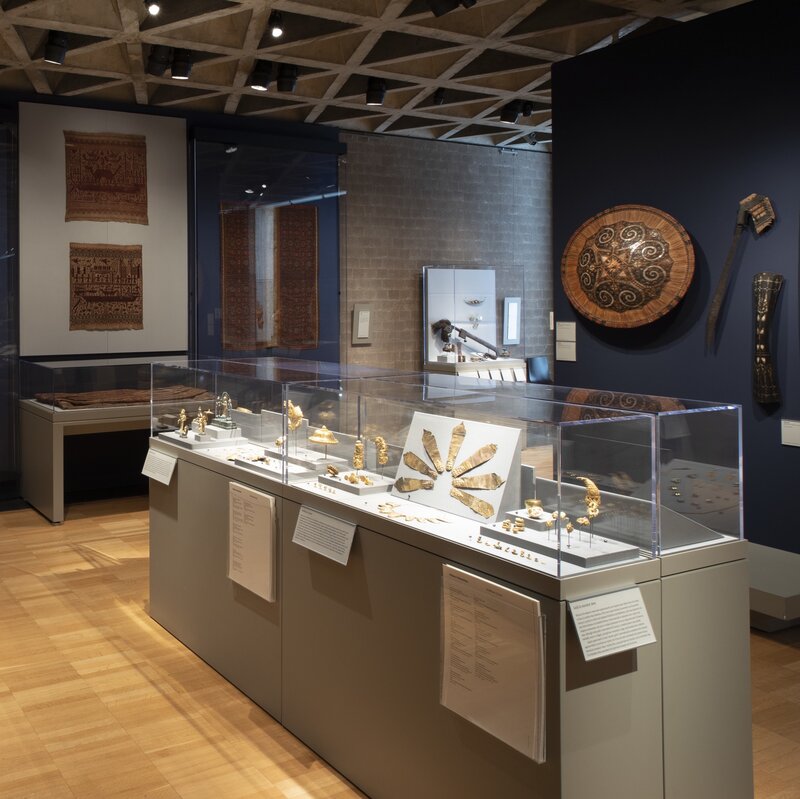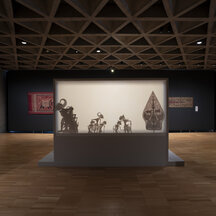One of the highlights of the Gallery’s holdings in Indo-Pacific art is a collection of about 500 gold objects from Java, an island in southwestern Indonesia, given to the Gallery in 2007 by Valerie and Hunter Thompson. A display of nearly 200 of these works is currently on view in a place of prominence in the museum’s third-floor galleries. One of the largest and finest collections of its kind in any public museum, it encompasses artifacts from prehistoric times—before the arrival in Java of Hinduism and Buddhism—to the 13th century.
Gold, rarely found on Java, was imported from Sumatra or possibly Borneo. Javanese goldsmiths then transformed it into jewelry, as well as courtly and temple paraphernalia. Although gold was associated with spiritual power and the divine, it was also widely used for personal adornment. The objects on display include religious items, jewelry, dancers’ ornaments, and richly decorated handles for kris, Javanese daggers believed to hold great spiritual power. Also showcased is a finely worked crown, which may have been used as a headdress to decorate a stone sculpture or was possibly worn by a central Javanese ruler.
Ruth Barnes
The Thomas Jaffe Curator of Indo-Pacific Art





